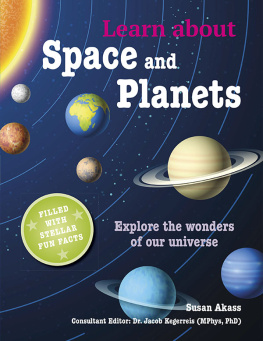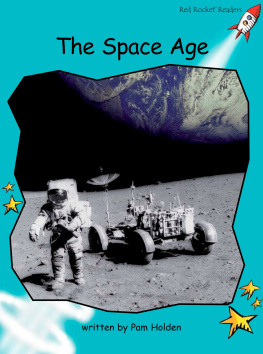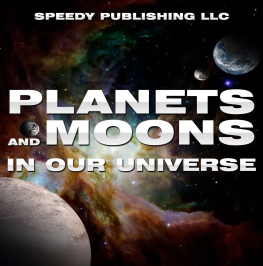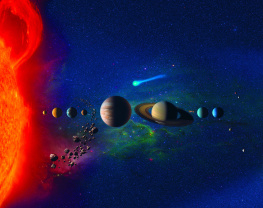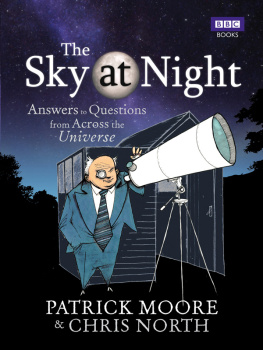
Learn about
Space and
Planets

Learn about
Space and
Planets

Explore the wonders of our universe
Susan Akass
Consultant Editor: Dr. Jacob Kegerreis (MPhys, PhD)

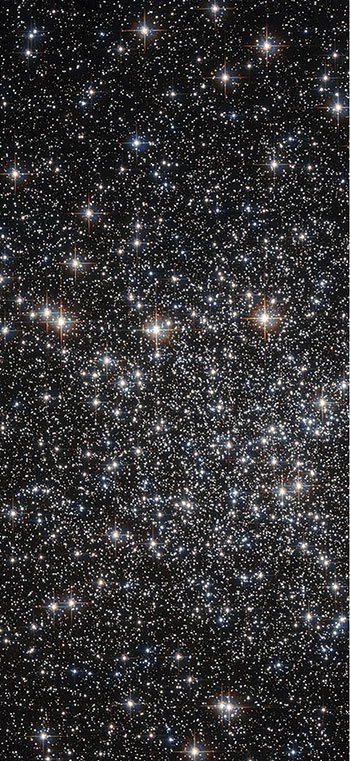
Published in 2021 by CICO Kidz
An imprint of Ryland Peters & Small Ltd
2021 Jockeys Fields, London WC1R 4BW
341 E 116th St, New York, NY 10029
www.rylandpeters.com
10 9 8 7 6 5 4 3 2 1
Text Susan Akass 2021
Design, illustration, and photography
CICO Books 2021
The authors moral rights have been asserted. All rights reserved. No part of this publication may be reproduced, stored in a retrieval system, or transmitted in any form or by any means, electronic, mechanical, photocopying, or otherwise, without the prior permission of the publisher.
A CIP catalog record for this book is available from the Library of Congress and the British Library.
ISBN: 978-1-80065-056-5
E-ISBN: 978-1-80065-076-3
Printed in China
Editor: Caroline West
Designer: Alison Fenton
Photographer: James Gardiner
Illustrator: Stephen Dew
In-house editors: Martha Gavin
and Jenny Dye
In-house designer: Eliana Holder
Art director: Sally Powell
Head of production: Patricia Harrington
Publishing manager: Penny Craig
Publisher: Cindy Richards

Contents


The mystery of space
Have you ever been outside on a cloudless night, somewhere with no electric lights and where the only light is from the Moon and the stars? When you look at the sky in a place like that, it is hard to believe how many stars you are able to see. You can see even more if there is no Moon shining. Thats because most stars are so faint you can only see them in total darkness.
In the past, when there were no electric lights, people saw the stars every cloudless night. People wondered what stars were and why the Moon changed shape and position, and when the next full moon would be. They also wondered why the Sun traveled across the sky during the day, why days were sometimes short and sometimes long, and why there were seasons. They wanted to know when to plant their crops or when the next rains would come.
At first, people answered these questions by telling stories. The ancient Greeks thought that the Sun was the god Apollo. Every day he rode a chariot pulled by fiery horses across the sky to bring light to the world. For the Egyptians, it was the Sun god, Ra, who sailed a ship across the sky. Each night he sailed it through the underworld, where the dead go, and then he was reborn each morning. There were stories to explain everything, from seasons, to eclipses, to how the world was created.
Star watchers
Then people began to study the stars. They watched and recorded how the stars and the Moon changed over time. They realized that there were patterns: that there were about 29 days from one full moon to the next (that became the length of our month) and that the patterns of the stars and the position of the Sun took 365 days to come back to where they started (that became our year). About 12 months fitted into each year but not exactly, so our calendar has been tweaked through history with different numbers of days in a month and leap years to make it all add up.
These star watchers, some living thousands of years ago, were incredibly clever and were even able to work out when solar eclipses would happen and the world would go dark (which was terrifying for them). But they believed that Earth was the center of the universe and that the Sun and the planets revolved around it. They also believed that the stars and planets had magic powers to control our lives.
Some of these star watchers were much more scientific and didnt believe in this magic power. They were known as astronomers. They wanted to know how the universe worked. Copernicus was the astronomer who eventually pointed out that the idea of everything revolving around Earth just didnt fit with what he could see happening in space. It was the Sun that was at the center of our Solar System.
Then an Italian scientist called Galileo Galilei built a telescope to study the stars. For the first time Jupiters moons were visible from Earth. He used his observations to show that Copernicus was right and the planets did revolve around the Sun. Later, an English scientist, Isaac Newton, came up with important ideas about forces and how things move, including how gravity keeps planets in orbit around the Sun. Modern astronomy began to develop and, as the questions kept getting harder to answer, so telescopes got bigger and more complicated.
People became more and more interested in the idea of space travel and in 1957 the first rocket was launched to send a satellite into space. Shortly afterward, a Russian dog, named Laika, took off in a rocket and orbited Earth. Then, in 1969, two men walked on the Moon. Unmanned space travel has developed hugely since then and spacecraft have been sent way out to the edges of our Solar System to send back information. Also, for the past 20 years the International Space Station has been orbiting Earth with scientists onboard learning about space and what lies beyond our planet. Computer technology has also helped to make sense of all the information that is beaming back to Earth.
Some discoveries and ideas about space are very difficult to understand, but the best place to begin is at the beginning and to think about all the questions people first asked about our planet and the stars beyond. This book will try to answer these questions and uses fun, practical activities to help you understand some of the science behind the answers.
Become an astronomer
Step 1
Go outside at various times on a sunny day and think about these questions. Never look directly at the Sunyou will damage your eyes.
- What is the Sun?
- Why does the Sun change position in the sky?
- What time does the Sun rise/set? Why does this change through the year?
- At sunset, how long does it take for the Sun to disappear?
- In what compass direction does the Sun rise/set?
- How does a compass work?
- How hot is it? Why is the Sun hot?
- What season is it? Why do seasons change?
- Why do we get wind and clouds?
- Why is the sky blue?
- What is above your head if you keep going up?
- What is beneath your feet if you keep going down?
- Why do things fall when you drop them?
- Why is there life on planet Earth?

